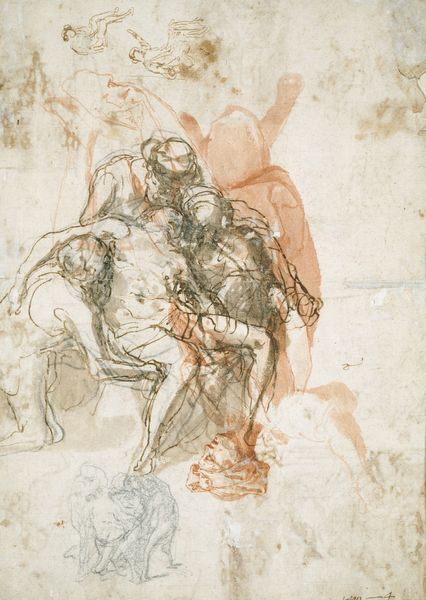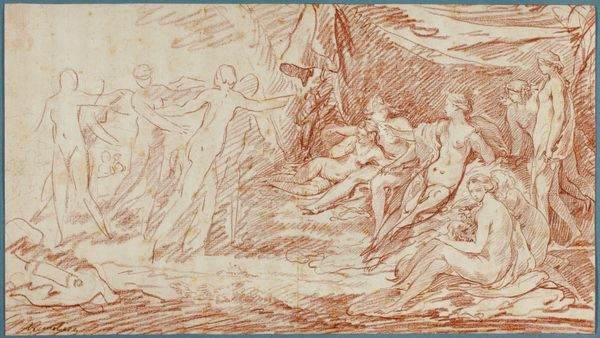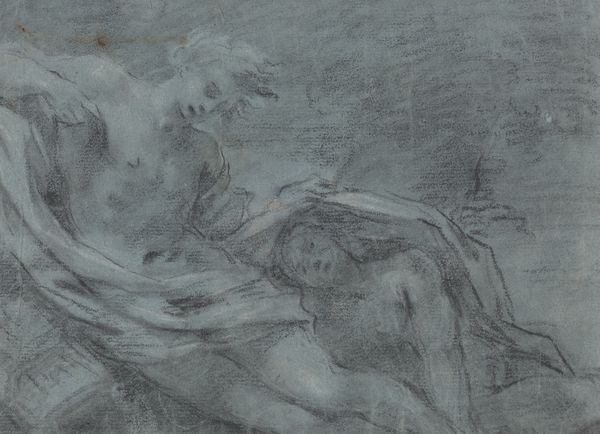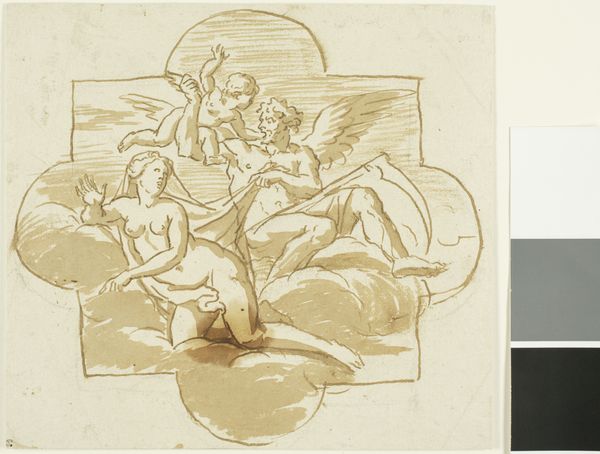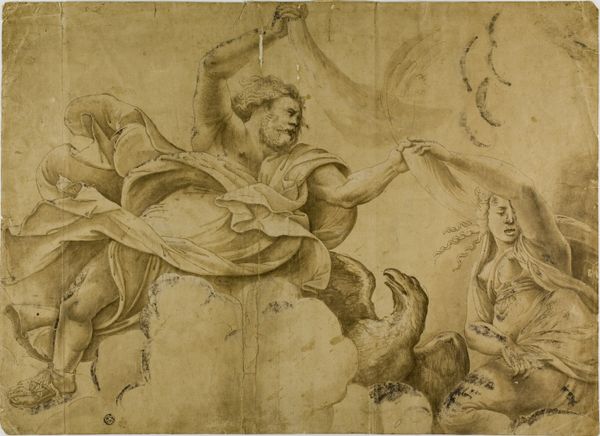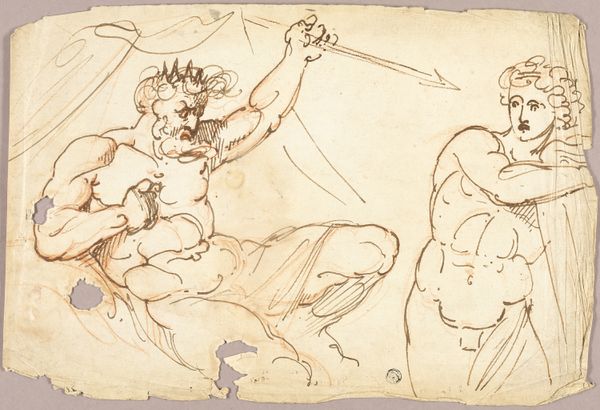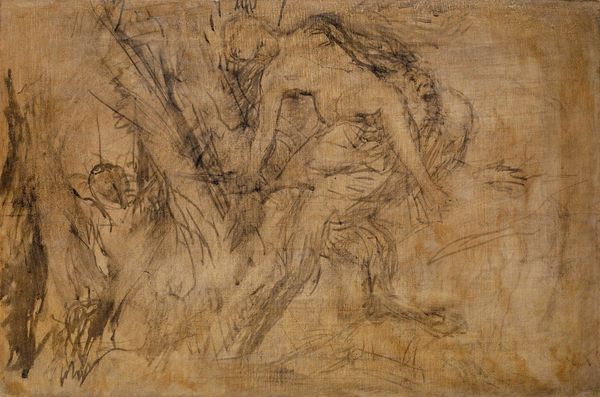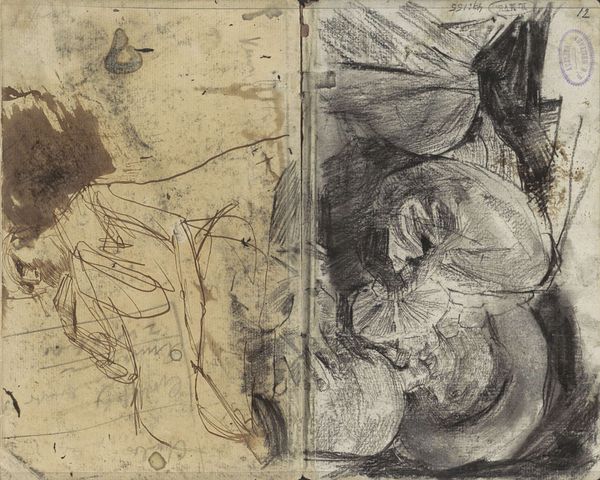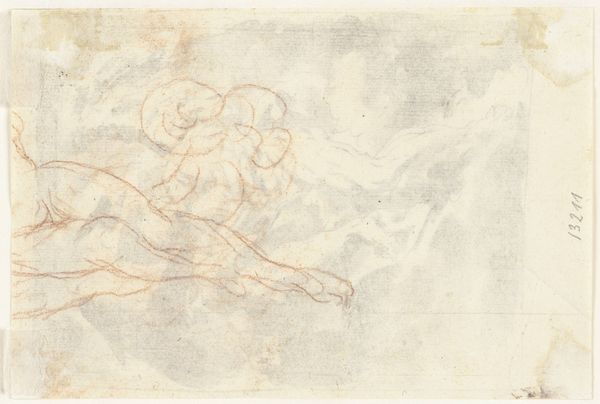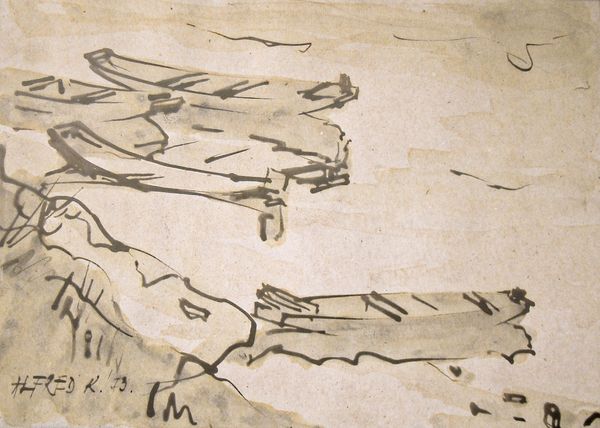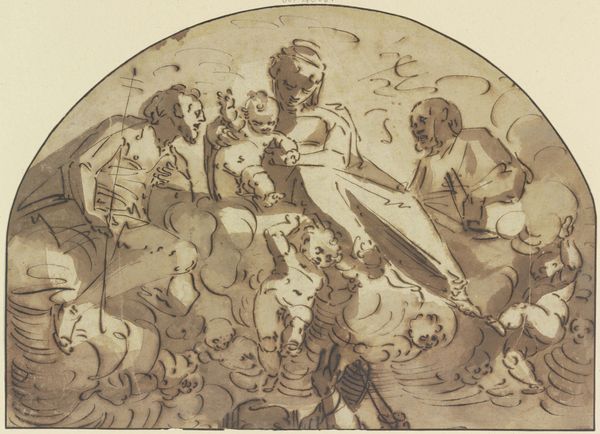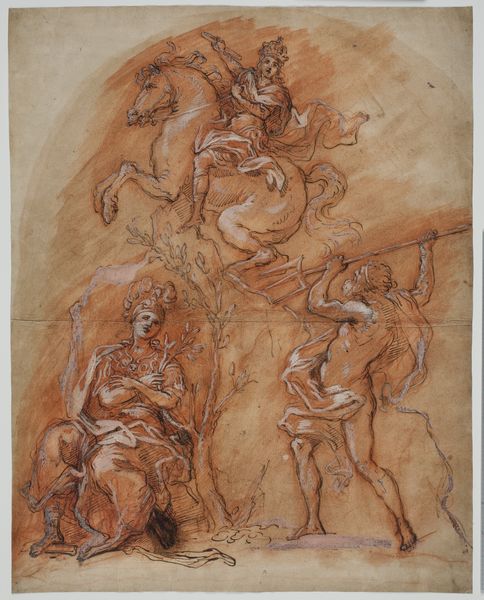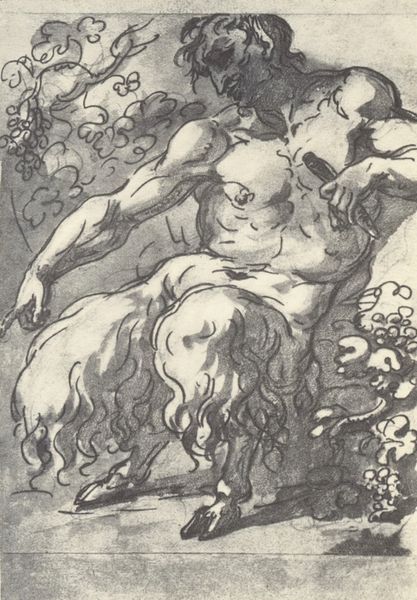
drawing, watercolor
#
portrait
#
drawing
#
allegory
#
landscape
#
figuration
#
oil painting
#
watercolor
#
roman-mythology
#
romanticism
#
mythology
#
history-painting
#
watercolor
Copyright: Public domain
Curator: Looking at this delicate watercolor drawing titled "The Dream of Aeneas" by Théodore Géricault, one is struck by the apparent dichotomy between classical subject matter rendered in the Romantic style. What are your first thoughts? Editor: There's a strange stillness about it, almost as if caught between waking and sleeping, amplified by those washed tones and the slightly unfocused lines. Curator: Géricault uses watercolor, a relatively accessible and easily transportable medium, which suggests the piece might have been produced outside a studio, perhaps in a more immediate, informal setting. The materials themselves speak to a certain portability, contrasting with the grandeur of the subject. Editor: Exactly. I am particularly drawn to the figure looming in the upper right corner – appears to be a god or some sort of guiding spirit. Their gesture feels both protective and urgent, as if they are steering Aeneas toward his destiny. Notice the reddish hues that surround him, lending an almost ethereal quality to their presence. Curator: The artistic process and the choice of material seem crucial here, pointing toward a certain democratizing impulse, perhaps even prefiguring later movements. We must also consider the labor involved: watercolor being, unlike oils, a difficult medium for corrections... the marks show a sense of planning but allow accidents in color as well, very distinct from the way that Romantic paintings would usually have been worked on. Editor: Indeed, looking closely, the sword at the foot of Aeneas's bed also tells a story. The prominent positioning of that sharp blade and armor—these items remind us of his warrior identity but in sharp contrast with Aeneas as a sleeping figure, revealing the mental strife of the leader and human being behind. Curator: Precisely. That position reflects Géricault’s innovative method to connect mythology with a real understanding of labor and its products. A close look at the drawing supports an examination of its making in light of social considerations about myth making, propaganda and human agency. Editor: Thinking about the classical allusions together with the visual symbols that bring history into play like those pieces of armor, it brings depth that surpasses only aesthetic evaluation. It feels like engaging in dialogues across historical periods and even internal human realms of waking life and subconscious motivation. Curator: An important reminder that engaging with art necessitates engaging with ideas that touch both craft and symbolism... food for thought. Editor: Absolutely. A fulfilling reminder to appreciate how cultural context permeates everything, regardless of style.
Comments
No comments
Be the first to comment and join the conversation on the ultimate creative platform.
